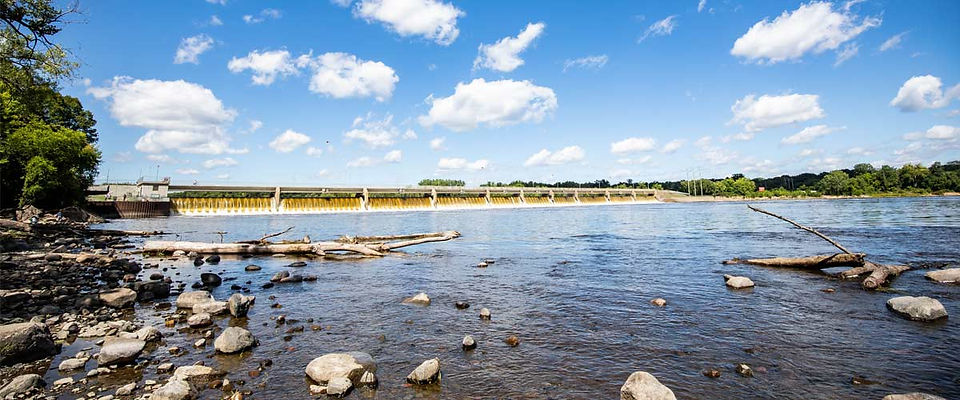Let's Get Musscular!

Photo from https://www.threeriversparks.org/sites/default/files/2020-09/Mississippi%20Gateway%20-%20Summer%20-%20River%20-%20Dam.jpg
Coon Rapids Dam
What's The Current Mussel Status?
Out of all the continents, North America has the highest number of freshwater mussel species, with the midwest having the largest amounts of species diversity, including Minnesota! As great as this may sound however, more than half of the midwest's known species are classified as endangered, threatened, or of special concern. According to The Nature Conservancy, approximately 70% of North American freshwater mussels have gone extinct or are at risk of such. With mussels being able to move, adapting somewhat to changing water patterns, and having the ability to clamp their shells shut from pollutants, all fingers point to our world's never-ending efforts towards urbanization and industrialization when it comes to the low mussel numbers. Gary Wagenbach, a professor of biology emeritus at Carleton College in Northfield, MN, expressed to us during an interview that the population of freshwater mussels is almost plateauing at this point, but its our past human impacts that have affected the mussel populations the most. The impacts of our industrial past is what continues to lead as one of the most prominent hardships of freshwater mussel present times. We need to recover from the past and heal our future.
The impact of dams is huge on the environment, and people alike, with its negative affects on keystone organisms such as the freshwater mussels that feed the wildlife, and keep our waterways clean, as well as positive affects on people who use dams for power, recreation, and aesthetic purposes. So what does our dam situation look like currently, and what action is being taken?
As of the year 2020, 85% of all dams reached the end of their lifespans, requiring either repairs or destruction. The want for removal of dams has increased widely over time among environmentalists, but now the economic and ethical needs have caught up as well. The actual start to these removals relies fully on the triple bottom line, specifically the economic side. The exceedingly old age of a majority of our dams increases expenses for maintenance to meet safety standards and to continue functioning properly. Other factors that also affect dam expenses are organizations like the Endangered Species Act or Native American tribes that enforce rights for the government to work with and around for decisions. With all these factors in mind, the government has to weigh the benefits and costs of each dam to build their conclusion. If the decision of the destruction of a dam is concluded however, where do we get with that?
The current dam dilemma is how truly beneficial is it to the environment to remove dams? Leaving old dams to decay on their own has many safety problems, with risks of collapse that could cause monumental floods and damage to both people and the environment. However, it has been seen that the removal of dams produces a similar effect, as the land is no longer supportive of the water being held, and said held water is filled with pollutants and organic material that can prove harmful to the native species forced to live in it.
Blow and Go
The blow and go dam removal method is just as it sounds; explosives are placed and set off, blowing the dam to rubble. The aftermath of this rapid destruction causes equally rapid destructive river effects. The river floods full of sediment and pollutants, displacing the usually stable environment that freshwater mussels reside in. This is then followed by impoundment which leaves the mussels with little to no water to exist in.
Slow and Steady
A slower approach is available, but it too can cause catastrophic effects even though the process is much slower.
A still conflicting situation, ecologists are looking at the data from the past that is available that can give them some insight as to how dam removal could prove beneficial in the future.
